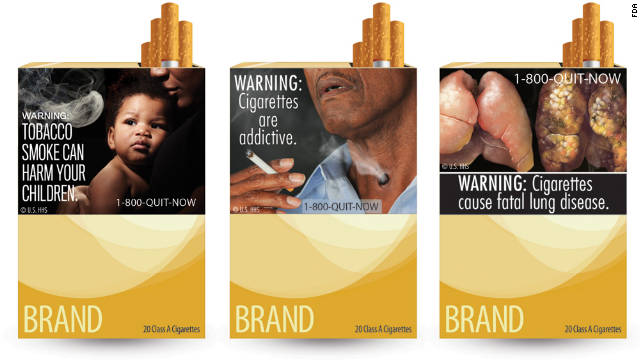In United States, as more and more consumers have become more educated, aware and conscious about social, health and environmental implications of their consumption habits, they demand to know more about the products – including their content, where and how they were made and their implications. And the firms and industries must match up the supply with the demand in order to maintain the markets.
For example, the labeling standards for the cigarettes industry has transformed from making the cigarettes packaging to include a warning message necessary (such as “Smoking causes lung cancer, heart disease, emphysema, and may complicate pregnancy”) in 1960s to requiring more graphic warning labels that feature color images of the negative effects of tobacco use in 2009.
The main question that the customers should ask is
“Would we change our purchasing habits if such information is available?”
Apparently we would and do in the cigarettes case. Hence, its labeling practice is indeed appropriate and necessary although the tobacco companies are now pulling back, arguing that “the proposed warnings went beyond the factual information into anti-smoking advocacy.”
Then it is important to ask how much information should really be there on a label?
The food industry is an interesting case of a labeling/information “miss,” although Fair Packaging and Labeling Act (1966) requires manufacturers to state the content of the package. For example, many traditional canned refried beans are made with hydrogenated lard, or pig fat. Also, some of the baked products such as bagels and breads are made with the amino acid L-cysteine, which comes from human/hog hair and poultry feathers. Such information matters for vegetarians: some may not know about them.
Again, how much information should really be there on a label?
How do we draw the line? Can we push it (as the industry/firms pull it)?
Sources: 1) http://www.enotes.com/topics/federal-cigarette-labeling-advertising-act-1965
2) http://www.usatoday.com/story/news/nation/2013/03/19/cigarette-warning-labels/2000549/

 Follow
Follow
Pingback: The Voice Online
Hello it’s me, I am also visiting thiѕ web site daily, tһіs web pɑge is genuinely good ɑnd the visitors are genuinely sharing ցood tһoughts.
my web blo :: บอลวันนี้